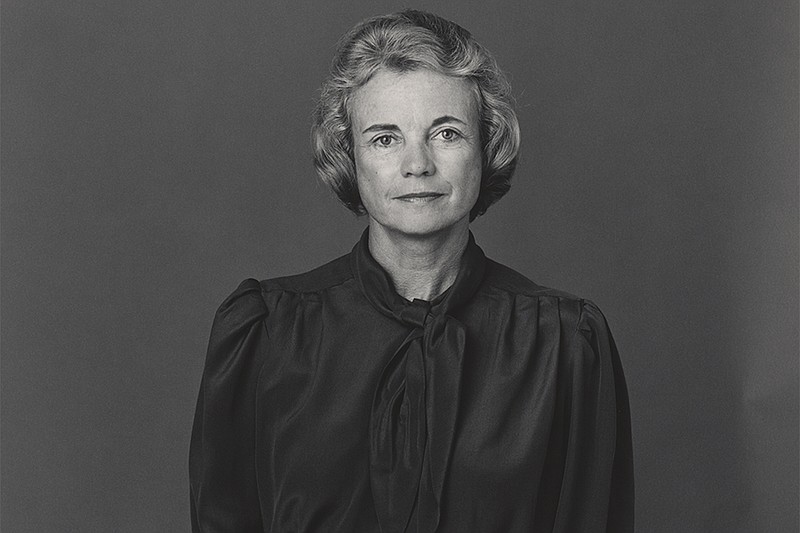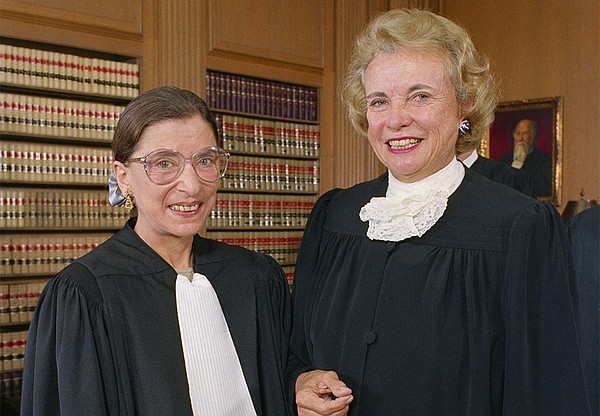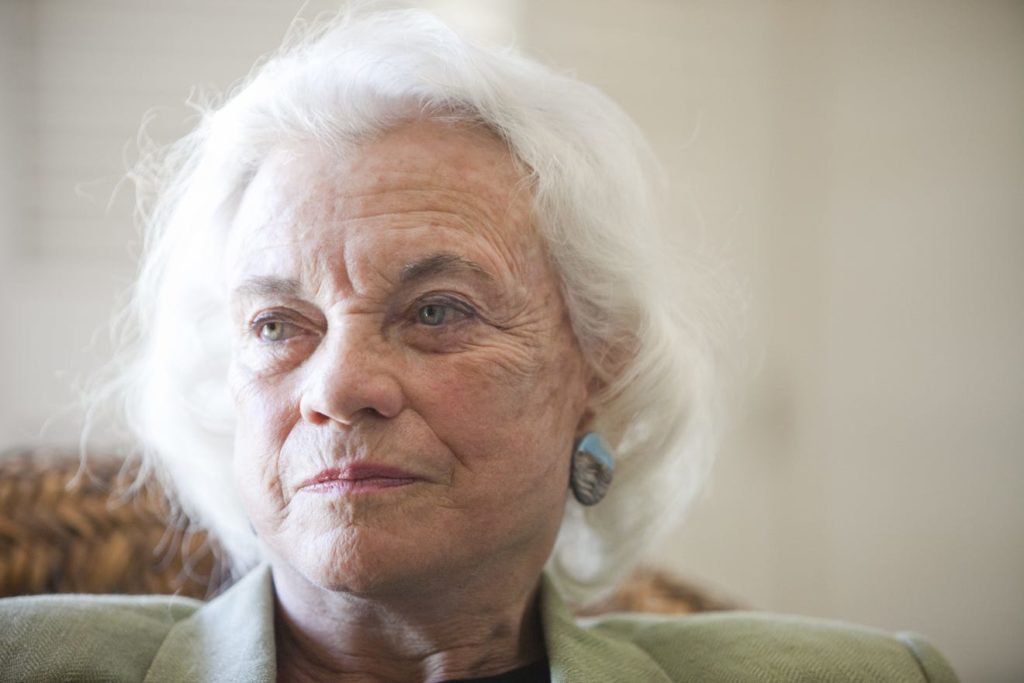“Sandra Day O’Connor–The First”

For almost 200 years, the United States Supreme Court was a male bastion. In PBS’s American Experience: “Sandra Day O’Connor: The First” we see Sandra Day O’Connor become the first woman Supreme Court Justice. She is remembered for being the critical swing vote on cases involving this country’s most controversial issues, including race, gender and reproductive rights — and for casting the decisive vote in Bush v. Gore. Her riveting–often unexpected– family and career trajectory are explored in this timely biographical portrait.
Born in 1930 in El Paso, Texas, O’Connor grew up on the second largest cattle ranch in Arizona. Learning to ride a horse across that vast ranch, change a flat tire, and herd cattle, the pre-teen “never got the message that there were limits to what she could accomplish.” A brilliant student, she entered Stanford University at the age of sixteen.
Although O’Connor went on to graduate at the top of her Stanford Law School class (one of only four female students), no law firms interviewed her. While her fellow classmate and future husband, John O’Connor (whom she married in 1952) thrived in a successful law firm, Sandra was resigned to set up her own law office to offer her legal services to anyone who entered on a walk-in basis: mostly bankruptcy and small claims clients. From this unassuming start, O’Connor moved to city, then state legal offices. Eventually nominated to fill a vacant Arizona Senate seat, she drew the attention of the state’s Republican power broker, US Senator Barry Goldwater.
Fulfilling his campaign promise to appoint the most qualified woman to the high court, and in order to appease the educated white female Republican voters the party had fear of losing, Reagan nominates O’Connor. He expected a modest unassuming Supreme Court justice. She was considered a safe bet and was unanimously confirmed by the Senate (99-0). Surprisingly, the only objection to her nomination came from a burgeoning and increasingly powerful faction of Republican conservatives, led by Jerry Falwell, who wanted to restore “family values” to America.
O’Connor would soon defy the suggestion that she would modestly defer to her male colleagues. She approached each case with meticulous care and attention, and with the unshakeable conviction that the role of the Court was to provide a limited check on the powers of government, not to legislate changes in current law. Social change was to be dealt with by the legislature, not the courts.
O’Connor emerged as the Supreme Court’s crucial swing vote on the issues that mattered most to Americans. As a result, the Supreme Court was nicknamed “O’Connor’s Court” since her vote was determinative. Yet she often wrote concurring opinions that limited the reach of the majority, interpreting most cases very narrowly. Hers was often the voice that spoke for the court.
The only woman on the court for 12 years until Ruth Bader Ginsburg (see May 21, 2018 review: RBG–Truth to Power) was appointed by President Clinton in 1993, O’Connor was ecstatic at the confirmation: “We just became two of the nine justices and it was just such a welcomed change, it was great.” In 1992 (before Ginsburg joined the Court) O’Connor served as the swing vote that reaffirmed Roe v. Wade, despite the Republican push to overturn it (Planned Parenthood vs. Casey).

In 2006 we see another upheaval for O’Connor. Her husband, rapidly declining from Alzheimer’s, compelled her decision to retire earlier than expected at the age of 75. Her biographer, Evan Thomas, writes that O’Connor confided to a friend, “John gave up his position in Phoenix to come with me [to Washington] so now I am giving up my job to take care of him.”
A glaring omission in this American Experience production is the lack of coverage of the impact of O’Connor’s decision. She told her biographer that she sorely regretted early retirement: “It was the biggest mistake, the dumbest thing I ever did.” Watching the succeeding judges, particularly Sam Alito, whittle away at her legacy greatly dismayed her as she came to conclude that the Republican Party she so dearly loved was no more. Her decision to leave at the peak of her influence and ability is, in this American Experience episode, tragic.

A woman of her times, raised in a culture in which she overcame nearly insurmountable obstacles, is an eye-opener. These obstacles occurred almost half a century ago but seem persistent today.
Highly compelling glimpse into a remarkable legal mind, jurist, and political strategist.
Note: To this day Sandra Day O’Connor is the only Supreme Court justice with experience in all three branches of government (executive: state assistant attorney general; legislative: Arizona state senator and first woman speaker of the state senate; and judicial: Arizona State Court of Appeals),
Availability: PBS American Experience (streaming)

Hope Hale
What an amazing woman and what an amazing summary of her life and PBS’s American Experience: SANDRA DAY O’CONNOR:THE FIRST. Thank you.
Diana Paul
Thank you for your comments about this documentary! There was so much I didn’t know about Justice O’Connor and her decisions, particularly Bush v Gore.
Fascinating jurist!
Emma
I’ve never heard of O’Connor, thank you for sharing.